Simulation Standard
Silvaco面向半导体工艺和器件仿真工程师推出的技术刊物
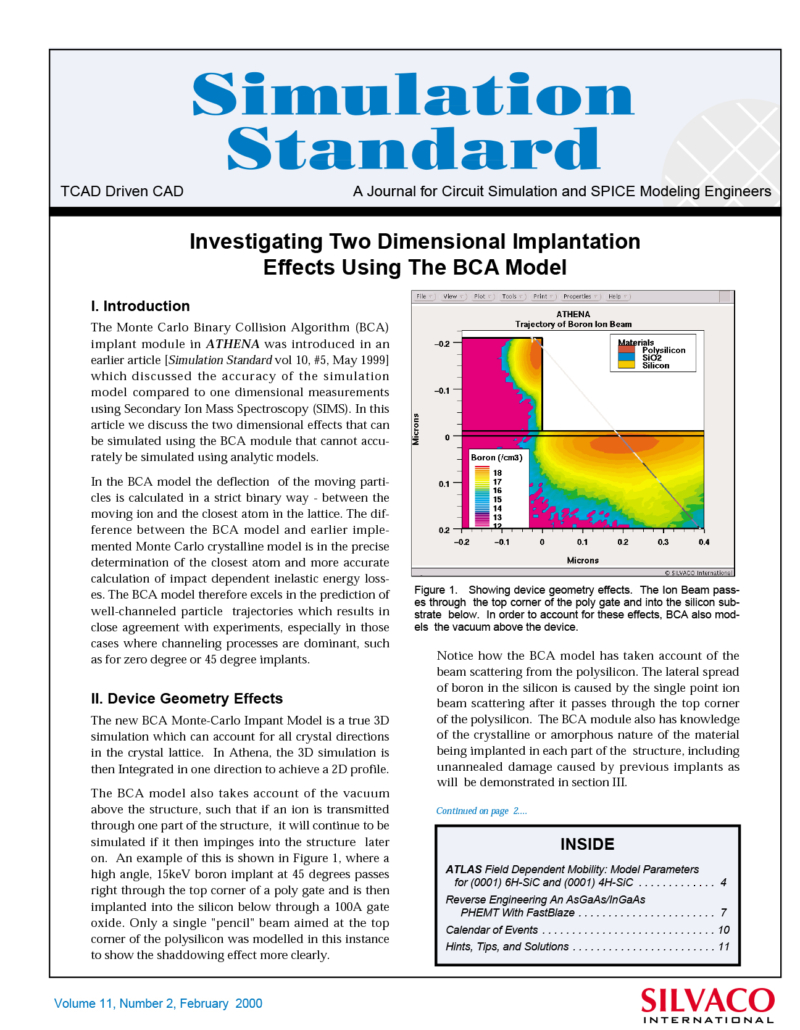
Investigating Two Dimensional Implantation Effects Using The BCA Model
The Monte Carlo Binary Collision Algorithm (BCA) implant module in ATHENA was introduced in an earlier article [Simulation Standard Vol 10, #5, May 1999] which discussed the accuracy of the simulation model compared to one dimensional measurements using Secondary Ion Mass Spectroscopy (SIMS). In this article we discuss the two dimensional effects that can be simulated using the BCA module that cannot accurately be simulated using analytic models.
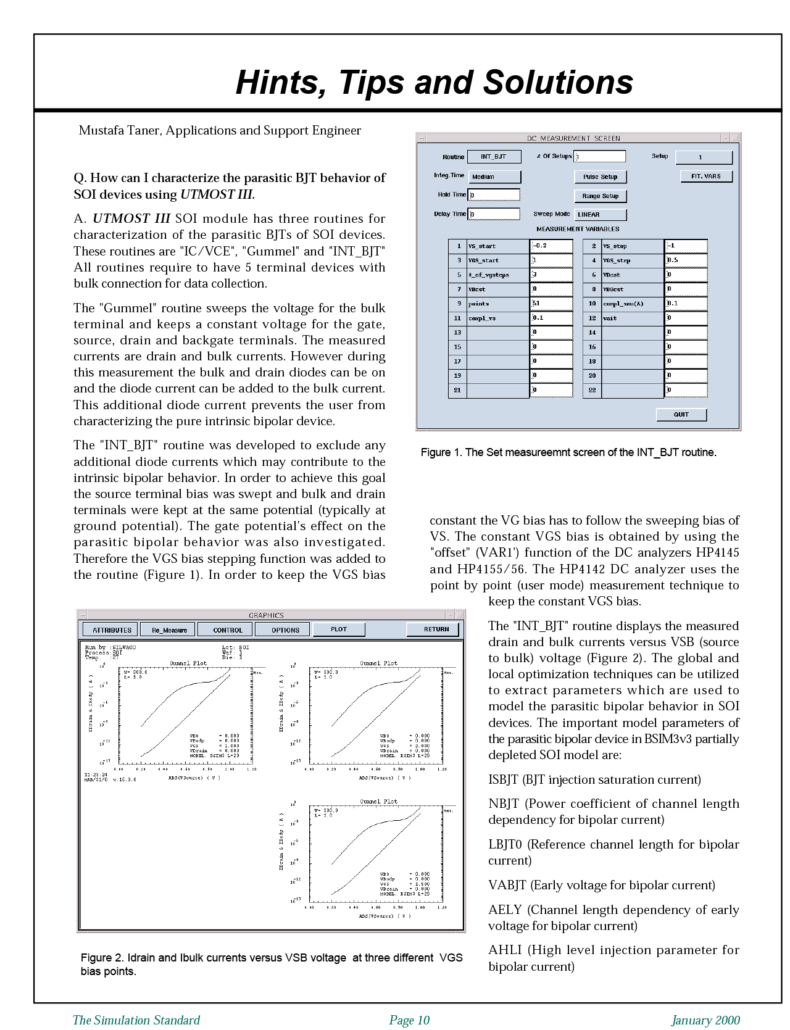
Hints & Tips January 1999
A. UTMOST III SOI module has three routines for characterization of the parasitic BJTs of SOI devices. These routines are "IC/VCE", "Gummel" and "INT_BJT" All routines require to have 5 terminal devices with bulk connection for data collection.
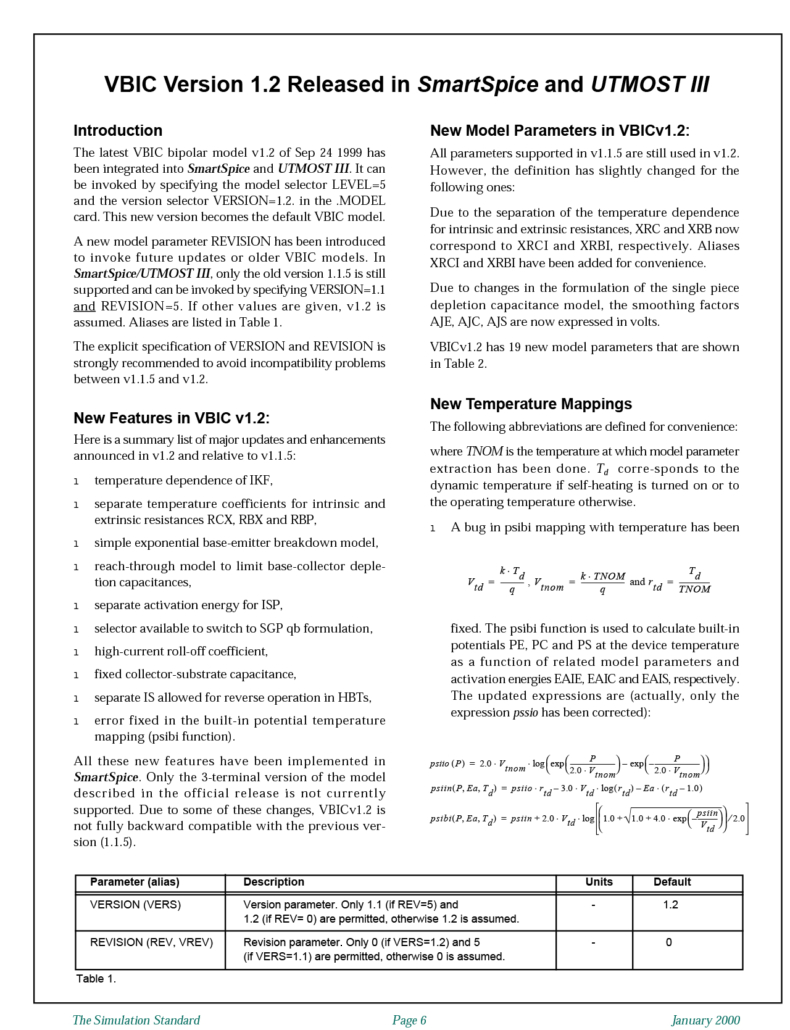
VBIC Version 1.2 Released in SmartSpice and UTMOST III
The latest VBIC bipolar model v1.2 of Sep 24 1999 has been integrated into SmartSpice and UTMOST III. It can be invoked by specifying the model selector LEVEL=5 and the version selector VERSION=1.2. in the .MODEL card. This new version becomes the default VBIC model.
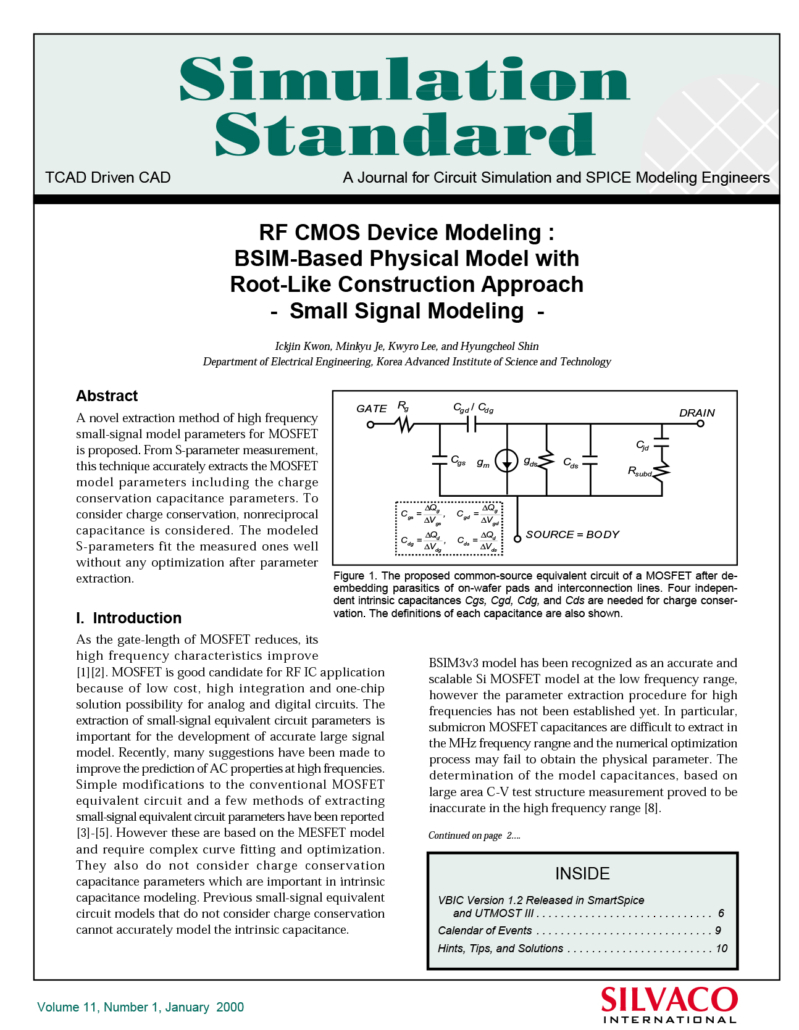
RF CMOS Device Modeling: BSIM-Based Physical Model with Root-Like Construction Approach – Small Signal Modeling
A novel extraction method of high frequency small-signal model parameters for MOSFET is proposed. From S-parameter measurement, this technique accurately extracts the MOSFET model parameters including the charge conservation capacitance parameters. To consider charge conservation, nonreciprocal capacitance is considered. The modeled S-parameters fit the measured ones well without any optimization after parameter extraction.
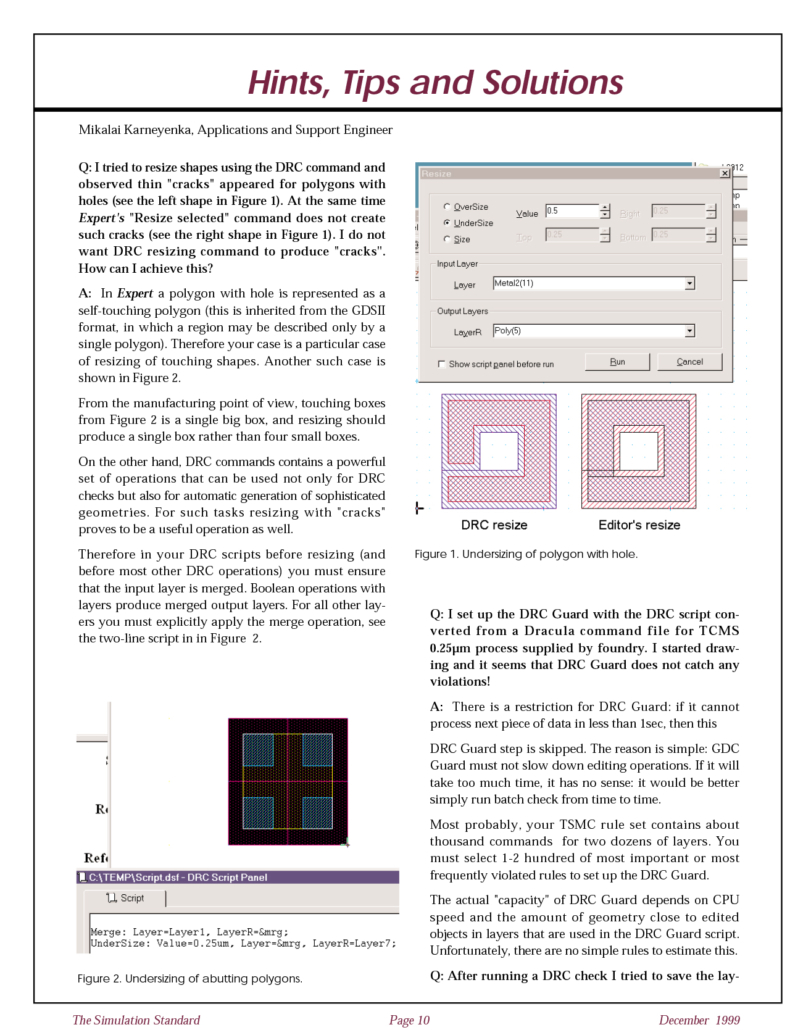
Hints & Tips December 1999
Q: I tried to resize shapes using the DRC command and observed thin "cracks" appeared for polygons with holes (see the left shape in Figure 1). At the same time Expert's "Resize selected" command does not create such cracks (see the right shape in Figure 1). I do not want DRC resizing command to produce "cracks". How can I achieve this?
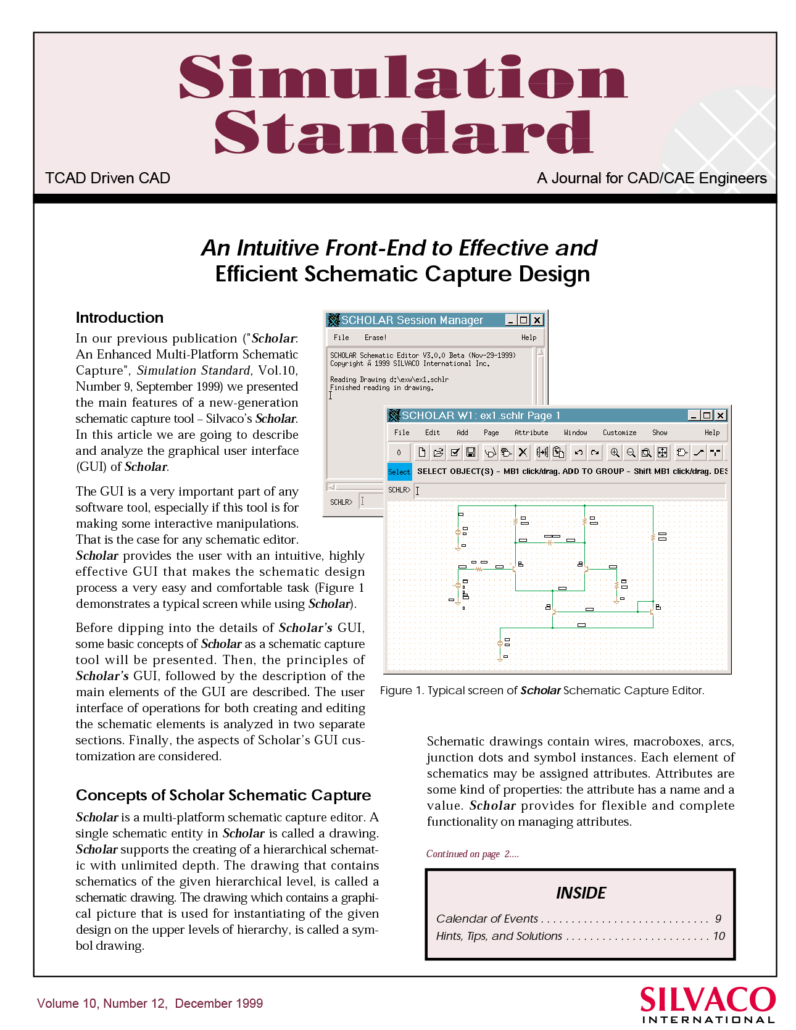
An Intuitive Front-End to Effective and Efficient Schematic Capture Design
In our previous publication ("Scholar: An Enhanced Multi-Platform Schematic Capture", Simulation Standard, Vol.10, Number 9, September 1999) we presented the main features of a new-generation schematic capture tool - Silvaco's Scholar. In this article we are going to describe and analyze the graphical user interface (GUI) of Scholar.

